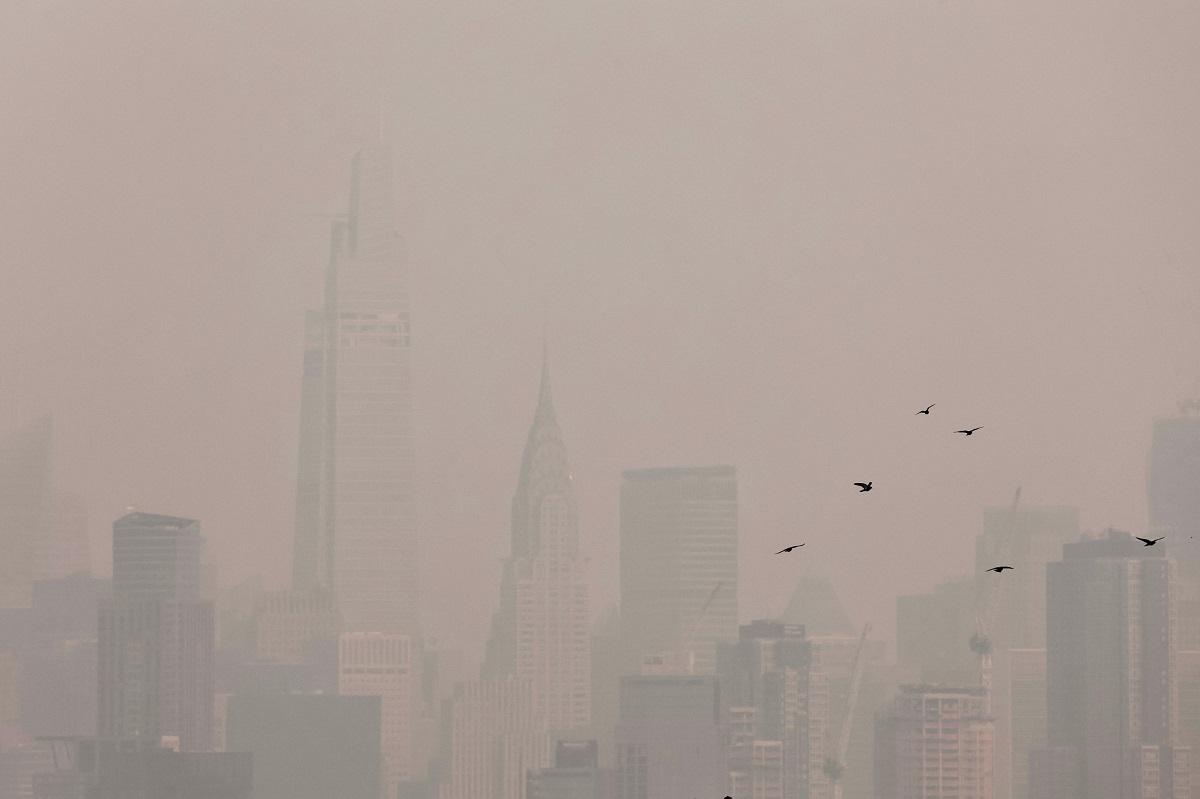Smoky haze parked over US East Coast with relief days away

NEW YORK — A smoky yellow haze generated by hundreds of Canadian wildfires hovered over a large swath of the United States on Thursday, threatening to make breathing difficult and disrupt air travel for millions of people until the weekend and beyond.
The US National Weather Service extended air quality alerts for another day for the East Coast from New England to South Carolina, as well as parts of the Midwest, including Ohio, Indiana and Michigan.
Health officials in more than a dozen states have warned that spending time outdoors could cause respiratory issues due to the high levels of fine particulates in the atmosphere.
Advised to stay indoors, residents of New York, Washington and other big cities donned masks and rushed to buy air purifiers to protect themselves from the yellow haze that arrived in the region on Tuesday afternoon.
The haze and low visibility prompted aviation officials to halt incoming flights to major airports in New York and Philadelphia from the Northeast, Mid-Atlantic region and Ohio for a second day. All flights bound for the airport in Newark, New Jersey, a major New York-area airport, were delayed.
It was the worst outbreak of wildfire smoke to blanket the US Northeast in more than 20 years, according to private forecasting service AccuWeather.
Smoky conditions are likely to persist until Sunday when a new storm system shifts the direction of prevailing winds and brings a chance of rainfall in parts of the country nearing drought conditions, National Weather Service meteorologist Peter Mullinax said.
"We're finally going to start to see more relief by the time we hit the early part of next week when we start to see those southerly winds come in and push that smoke more farther north and out into the Atlantic," Mullinax said.
With an "unhealthy" Air Quality Index reading of 178, New York City's air on Thursday was again more polluted than any major city in the world, topping cities such as Dhaka and Hanoi that are fixtures on the global bad-air list compiled by IQAir, a Swiss technology company.
The US Air Quality Index (AQI) measures five major pollutants, including particulate matter produced by fires. The higher the reading, the more polluted the air. Readings over 100 are classified as "unhealthy" while those exceeding 300 are "hazardous."
Within the United States, the worst air was found in locations in Maryland, Pennsylvania and Delaware, where some readings exceeded 300. Some suburbs of Baltimore and Philadelphia topped 400.
Even so, conditions in New York seemed a bit clearer than a day earlier, as patches of blue opened up in the morning skies over midtown Manhattan. While the faint smell of burning wood lingered, the smothering blanket of yellow and orange-tinged haze appeared to thin out, bringing a modicum of relief.
However, the bad air again forced a slew of cancellations on Thursday. Horse racing was scratched at a track on New York's Long Island that is set to host the prestigious Belmont Stakes this weekend.
In Washington, public schools called off outdoor activities, including sports, for a second day.
"This problem is likely to continue or worsen through Friday," Washington Mayor Muriel Bowser said in a tweet. "We urge residents and visitors to follow precautions related to the 'Code Purple' air quality alert."
Large swaths of Michigan are also under red flag warnings due to dangerous fire weather conditions in both of the state's peninsulas, according to the weather agency.
Forest fires continued to burn across Canada on Thursday, sending more smoke across the US border.
The country is enduring its worst-ever start to wildfire season. Thousands of Canadians have been forced from their homes and about 3.8 million hectares (9.4 million acres) have already burned, roughly 15 times the 10-year average, according to federal Minister of Emergency Preparedness Bill Blair. — Reuters



